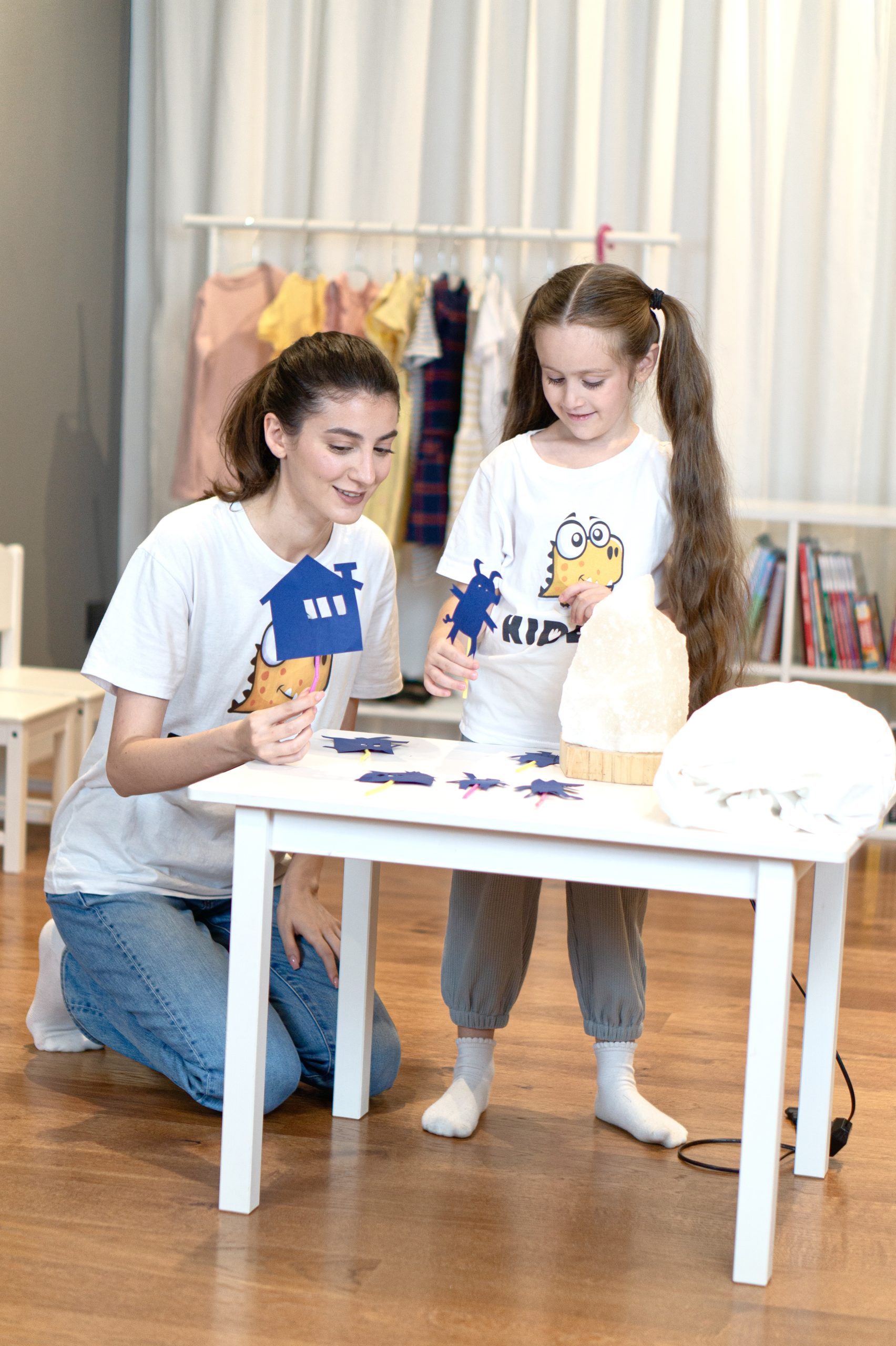Are you seeking a balanced approach to your child’s activities? In today’s digital age, finding the perfect blend of online educational tools and enriching play is essential for nurturing holistic child development.
With the right combination of digital and offline activities for kids, you can create a dynamic learning environment that adapts to your child’s unique interests and preferences. So, are you ready to embark on a journey of discovery and growth with your child? Embrace the power of blending online and offline activities for kids, and watch as they flourish into confident, well-rounded individuals.
The Importance of Balancing Screen Time & Physical Play
Screen time refers to the duration a child spends on screens like TVs, tablets, or phones. When managed properly, it can be educational and even spark creativity. For instance, exploring origami tutorials on YouTube can inspire new skills and ideas.
Unfortunately, there are times when things take a turn, and the child ends up spending hours glued to the TV or mindlessly scrolling through social media feeds. Sometimes, kids have a ton of toys, yet they refuse to play with any of them. In such cases, exhausted parents may feel they have no option but to resort to cartoons just to catch a break.
However, excessive screen time, particularly unmonitored, can pose risks. It’s essential to balance screen time with offline activities for kids to support healthy development and well-being.
The phone and TV expose kids to content that’s often entirely useless. But that’s not the worst part. They can stumble upon truly harmful stuff, from explicit scenes to violent imagery. Extended screen time also means kids sit still for too long, hunched over and straining their eyes.
Out of all the electronic gadgets, smartphones are the riskiest for kids’ eyes. Even the biggest screens make you hold your phone too close, straining your eyes. Plus, using a smartphone means you’re often tilting your head down, causing tension in the neck and bad posture. It’s especially bad to use gadgets before bed. The blue light messes with melatonin, which can keep kids awake and jittery.

In such situations, offline games save the day. They not only keep kids entertained for extended periods but also promote their physical development. Through active movements like climbing, jumping, running, and throwing, metabolism increases, while strength, flexibility, reaction speed, and endurance improve.
Offline games don’t always have to be active. If your child isn’t in the mood for running or jumping, you can host a tea party with dolls or create a sensory box from scrap materials. These activities are valuable for nurturing your child’s imagination, creativity, and fine motor skills, ultimately enhancing their speech development.
Every parent inevitably encounters the challenge of navigating online vs. offline activities for kids, all while ensuring their child’s development and carving out time for themselves.
Strategies for Limiting Screen Time
Reducing screen time can be challenging for children who enjoy it and for parents needing time for themselves and their responsibilities. Here are our top 5 tips for minimizing screen time with minimal resistance.
1. Establish clear boundaries.
Setting clear boundaries is key to creating a healthy screen time routine. Structure the day so your child knows what to expect and when. Schedule outdoor activities, educational pursuits, and playground visits. The more structured and diverse your child’s routine, the less they’ll rely on screen-based entertainment. However, allocate specific gadget time, discussing with your child beforehand how much time is appropriate.
2. Teach your child about the potential harm of excessive screen time.
Children are often more perceptive than we give them credit for. Explain your concerns honestly and speak to them like adults. While you may encounter initial resistance and complaints, discussing the reasons behind limiting screen time for children can lead to valuable insights and benefits in the long run.
3. Be a role model.
Lead by example to demonstrate that enjoyable activities exist beyond screens. Engage in hobbies, read books, take walks, or pursue personal interests. By showcasing your interests, your child will be encouraged to explore offline activities as well.
4. Designate screen-free zones and times.
Establish specific times and places where screens are off-limits for the entire family. Consider implementing screen-free zones during meals, before bedtime, or during designated family time. This encourages bonding and fosters meaningful interactions without distractions.
5. Introduce offline games to your child’s routine.
When traditional toys lose their appeal, consider engaging them with board games or educational activities using everyday items. Simple setups, like sorting different types of pasta, can enhance attentiveness and fine motor skills while providing extended entertainment. Such activities require minimal materials and can effectively occupy your child’s attention for a substantial period.
Creative Offline Activities That Engage & Educate
If you’re struggling to keep your child engaged with educational activities, the Kidero app offers over a thousand curated ideas to help. From indoor games to outdoor adventures, the app allows you to tailor activities based on your child’s needs and interests. Whether you prefer to play together or encourage independent play, the app provides options for every scenario. Plus, you can easily search for activities based on available materials, ensuring endless learning opportunities right at your fingertips.
You have the flexibility to select games tailored to your child’s specific developmental needs and interests, whether it’s enhancing emotional intelligence, speech, motor skills, creativity, or musical appreciation.

A fan-favorite section among users is the assortment of games designed for those lazy days when energy is low. For instance, consider the game where you and your child take turns being the instrument and the musician. Turn on some classical music, then flip a coin to determine who will be the instrument and who will be the musician. The “instrument” (hopefully you) gets to lie on the floor while the “musician” plays. It’s a delightful way to unwind and enjoy some soothing music together.
The Role of Parents in Encouraging Offline Play
Certainly, parents play a pivotal role in striking a healthy balance between online vs. offline activities for kids. They can introduce engaging educational games, brainstorm fun activity ideas, and occasionally join in the play, fostering meaningful connections and creating cherished memories that bring joy today and instill confidence for the future.
It’s equally crucial to consider the child’s interests when selecting offline activities. Pay attention to what excites or bores your child, as this insight guides you towards games that captivate his attention and offer maximum benefit.
Moreover, your child’s interests can guide you in selecting offline programs to enroll her in, whether it’s energetic sports or tranquil art classes. These activities not only contribute to her growth but also provide insights into her evolving personality traits.
Integrating Educational Apps with Physical Activities
Mobile apps such as Kidero, which encourage offline activities, serve as valuable tools for parents striving to adopt a balanced and conscientious approach to their child’s development. Here are 7 compelling reasons why:
- Balanced Screen Time: In today’s digital age, children are exposed to screens from a young age. Off-screen activities help balance screen time and encourage real-world interactions.
- Physical Health: The developmental benefits of physical play contribute to the holistic growth of children, nurturing their creativity, imagination, and ability to explore and understand the world around them.
- Creativity and Imagination: Offline activities stimulate creativity and imagination in ways that screen-based activities often cannot. They encourage children to think critically, problem-solve, and explore their surroundings.
- Social Skills: Off-screen activities often involve interaction with peers, siblings, or parents, fostering important social skills such as communication, cooperation, and empathy.
- Family Bonding: Engaging in offline activities as a family strengthens bonds and creates lasting memories. It provides opportunities for quality time together and strengthens the parent-child relationship.
- Cognitive Development: Many off-screen activities are designed to enhance cognitive skills such as memory, attention, and problem-solving, laying the foundation for academic success.
- Emotional Well-being: Offline activities offer children a chance to express themselves creatively and emotionally, promoting self-confidence and emotional resilience.
In summary, apps like Kidero play a vital role in promoting a well-rounded approach to child development by offering a diverse range of off-screen activities that support physical, social, emotional, and cognitive growth. They also play a crucial role in maintaining the proper balance between online vs. offline activities for kids.
Success Stories: Real-life Examples of Balanced Activity Schedules
Many families are increasingly integrating both online and offline activities into their children’s daily routines. This often yields impressive results, with children showing reduced dependence on gadgets and an overall improvement in the family atmosphere.
The journey of the Garcia family highlights the positive outcomes of prioritizing offline activities in family routines. By fostering creativity and connection, families can create memorable experiences that nurture holistic child development.
“Looking for alternatives to screen time led us to explore a whole new world of activities. By introducing a mix of DIY projects, outdoor adventures, and storytelling sessions, our family dynamics shifted. We’ve rediscovered the joy of unplugged playtime and have never felt closer as a family.”
Another compelling example is the story of Mary, a mother of three from Philadelphia. It showcases how families have successfully found a balance between screen time and real-world experiences, resulting in increased happiness, stronger bonds, and enhanced creativity among children and parents alike.

“We were struggling to find engaging activities for our kids that didn’t involve screens. Thankfully, we discovered a variety of creative ideas that sparked our children’s imaginations. Now, we have more fun family time without relying solely on technology!”
All of this confirms that establishing a balanced schedule of offline and online activities can be highly beneficial for children’s development and the family atmosphere.
Tips for Creating a Balanced Activity Schedule for Your Child
Children experience a much smoother and more peaceful life when they follow a schedule. It provides them with a sense of predictability and clarity about expectations. Interestingly, this structured approach benefits not only children but also parents, as it helps reduce the chaos that often ensues in households and minds.
Begin by outlining your schedule. Identify your free hours and when you need to focus on work or other commitments. Jot down your expectations and preferences.
- Evaluate your child’s schedule. Will they be at home all day? If not, what activities or classes are they involved in? Plan out the day, specifying what will happen and when.
- Recognize that your child shouldn’t spend the entire day playing alone. It’s normal for them to seek your guidance when they’re bored. Decide when it’s essential for them to be occupied—this is the time to schedule activities.
- Preplan engaging offline activities for your child during these times. Choose from a variety of ideas available in the Kidero app if you’re unsure what to do. Opt for diverse activities, like one active session involving jumping or playing ball, and another quieter one, such as drawing to classical music or crafting with pasta.
- When your child starts to feel restless (which is inevitable), consider allowing limited screen time. Select content in advance, and if it’s a YouTube video, consider downloading it for offline viewing. This allows you to control the content your child consumes.
- Utilize parental control apps on your devices to manage your child’s screen time effectively. There are numerous apps available that filter and monitor the content accessible to your child on phones and tablets.
- Don’t be discouraged if your child initially shows reluctance to engage in offline games. These activities often require imagination and creative thinking, which may be unfamiliar to children accustomed to screen-based entertainment. Offer encouragement and be patient as they adjust to new experiences.
Fostering a Healthy Lifestyle for Children
Balancing online vs. offline activities for kids offers numerous benefits for families. Firstly, it helps in limiting screen time for children. Restricting unsupervised screen time can prevent health issues and exposure to inappropriate content.
Incorporating offline activities into a child’s routine promotes overall health by engaging all body systems and enhancing attentiveness and reaction times. The developmental benefits of physical play are substantial, encompassing the improvement of gross motor skills, coordination, and spatial awareness in children. These games also foster speech development, imagination, creativity, and intellectual abilities.
Moreover, offline games are invaluable for parents, providing long-lasting entertainment for children while freeing up time for parents juggling childcare and work responsibilities.

Additionally, they can positively impact the family budget, requiring no additional purchases or expenses. This is a win-win situation for parents striving to strike a healthy balance of online vs. offline activities for kids.
In summary, integrating offline activities and limiting screen time for children yields significant advantages for families across the board.
Kidero app provides an extensive array of off-screen activities carefully crafted to nurture child development and strengthen family bonds. These activities offer a holistic approach that encompasses cognitive, emotional, and social growth, encouraging children to explore their interests, express their creativity, and develop essential life skills.
Wrapping Up
By incorporating Kidero’s activities into their daily routines, parents can create valuable opportunities for their children to learn, discover, and connect with the world around them. From imaginative play and hands-on experiments to collaborative projects and outdoor adventures, Kidero offers a diverse range of experiences that cater to various interests and developmental stages. The developmental benefits of physical play extend beyond physical health to encompass cognitive development, emotional regulation, and the cultivation of resilience and problem-solving skills in children.
Moreover, Kidero serves as a supportive platform for parents, providing guidance, inspiration, and practical tips to enhance their parenting journey. Through Kidero, parents can discover new ways to engage with their children. With its emphasis on holistic child development and family enrichment, Kidero empowers parents to make the most of their time with their children and build strong, nurturing relationships that last a lifetime.
For more information and activity ideas, download Kidero (AppStore, GooglePlay) today and embark on a journey of discovery and growth with your child.


